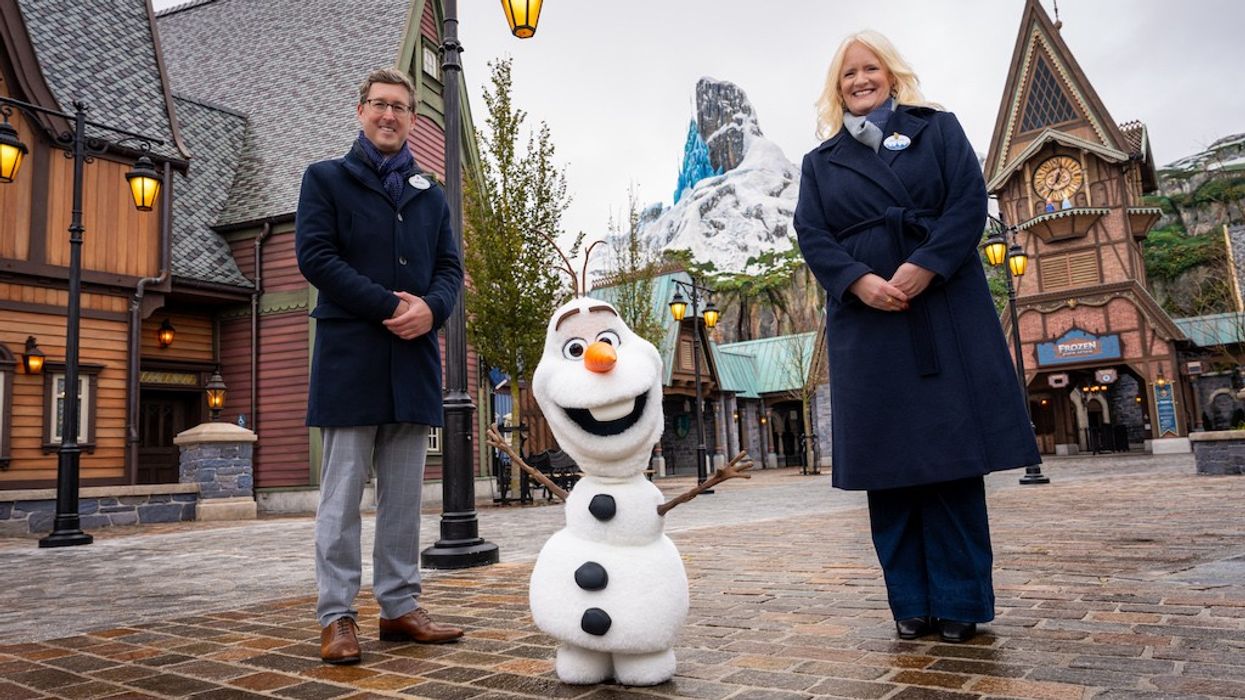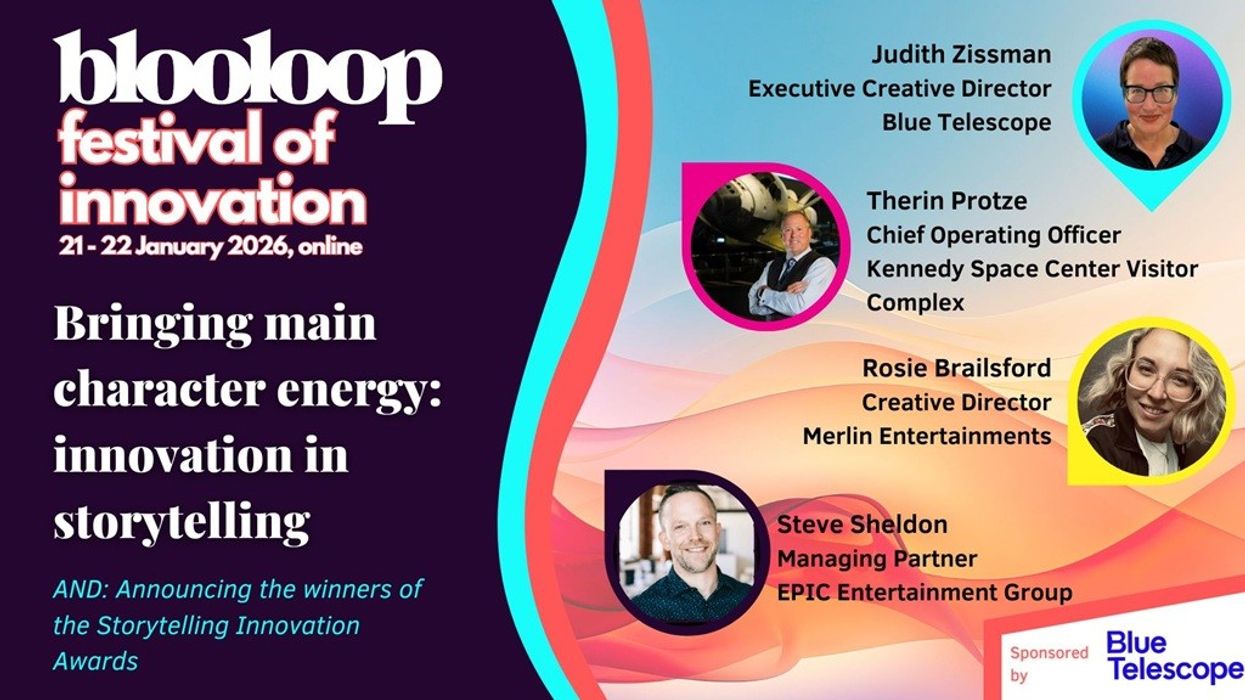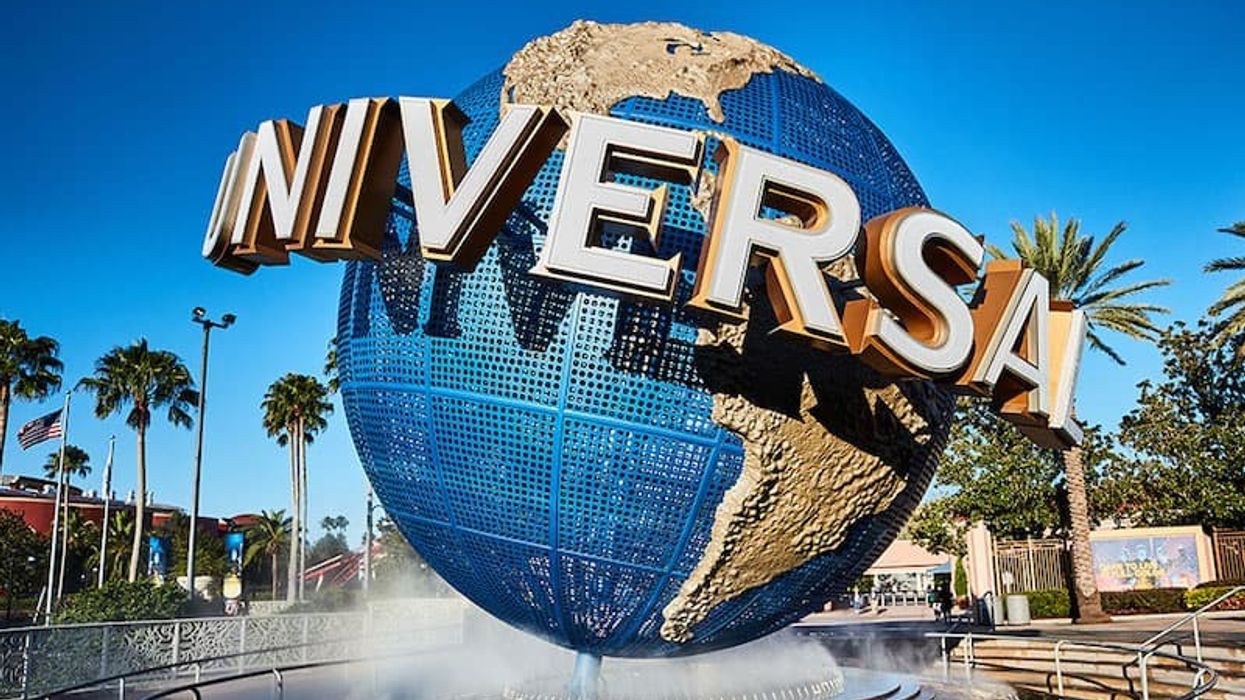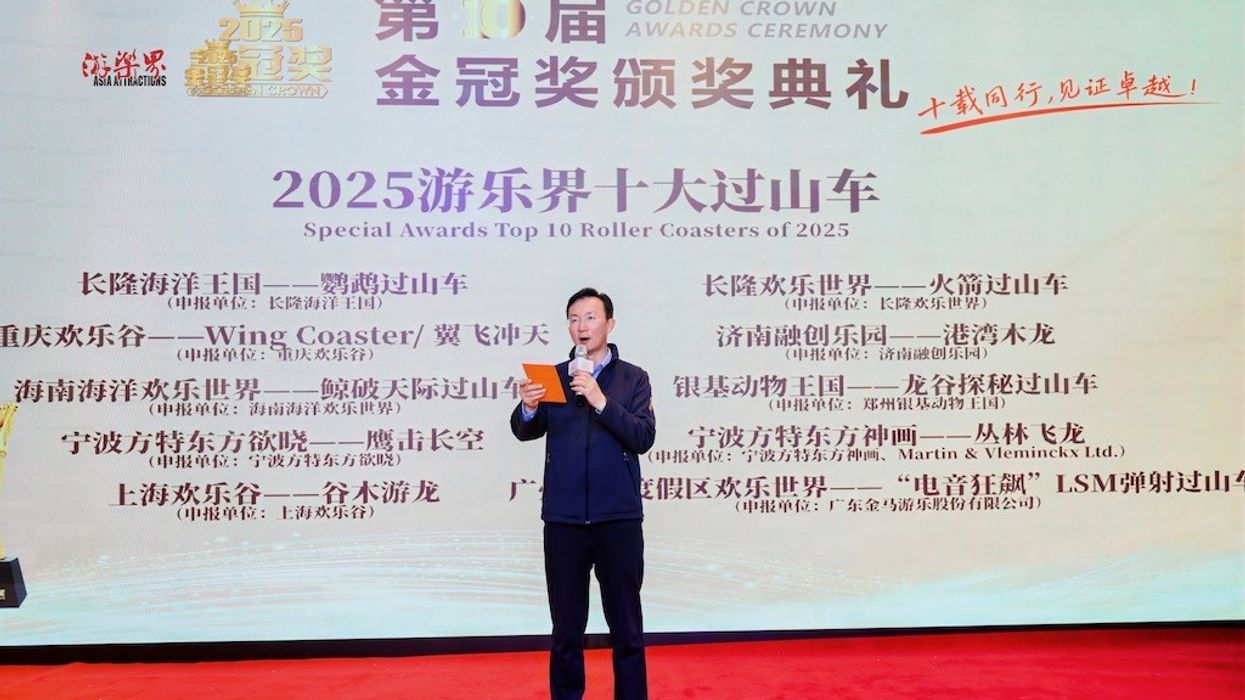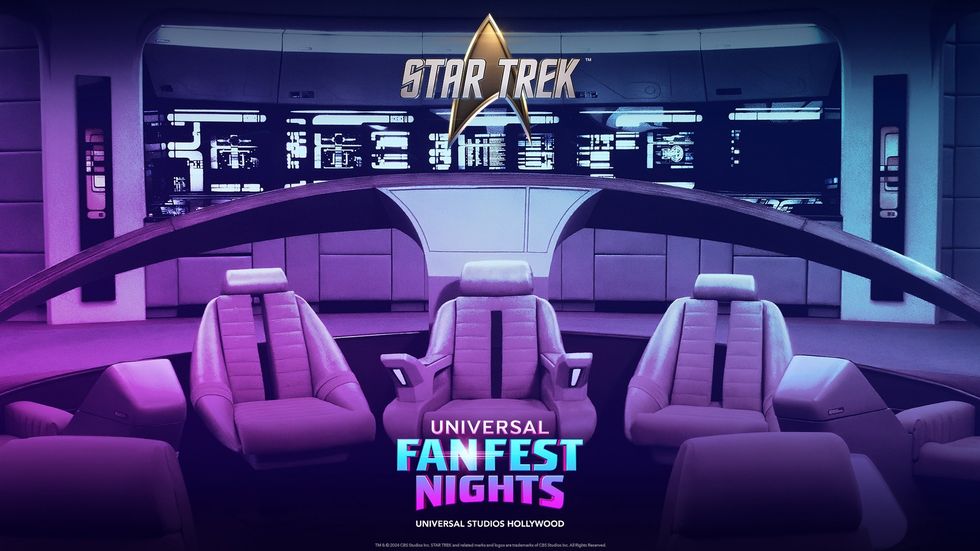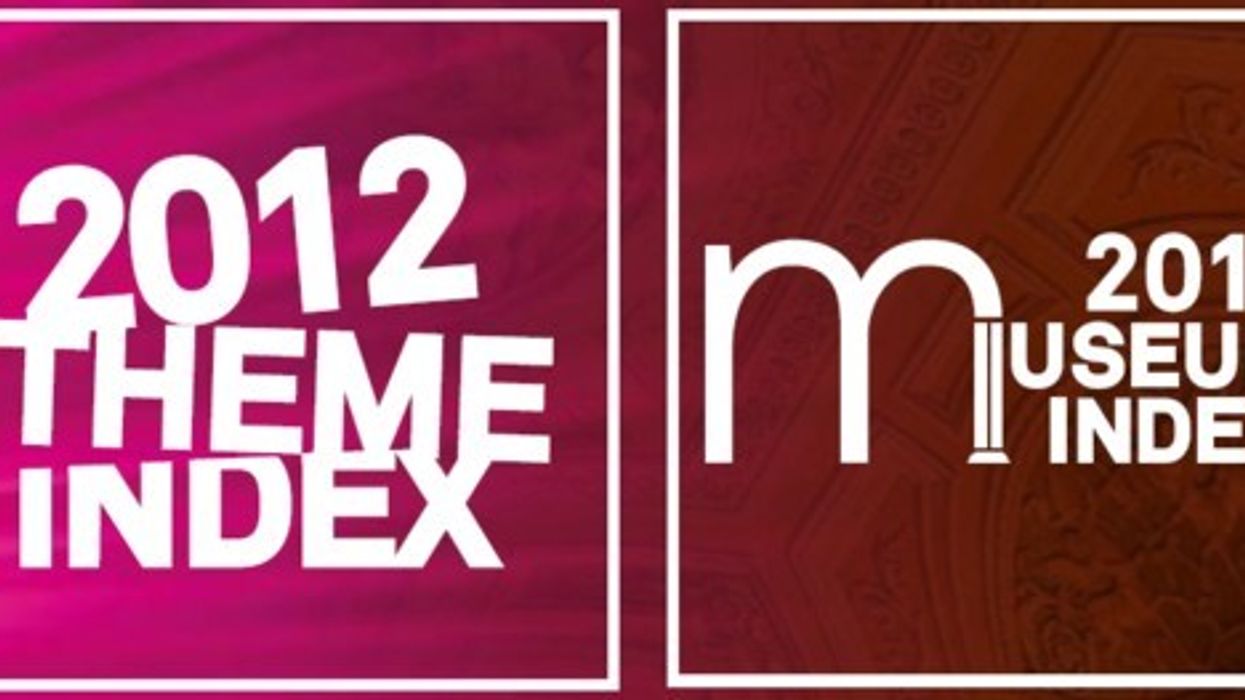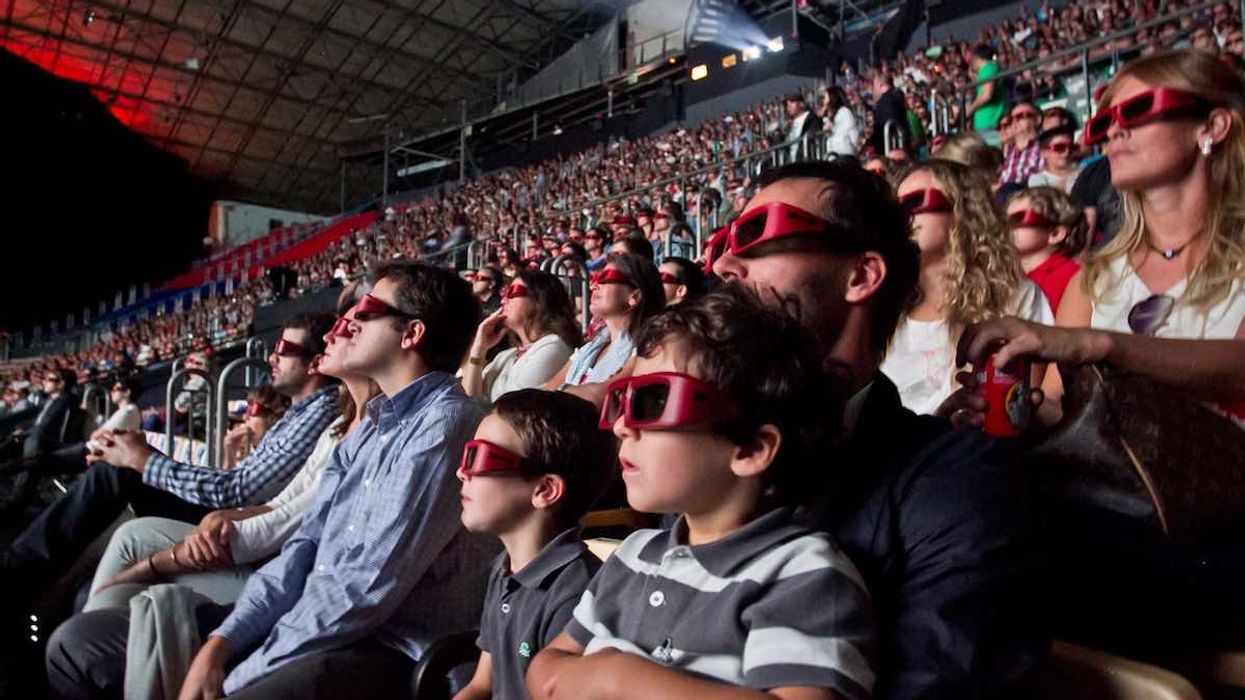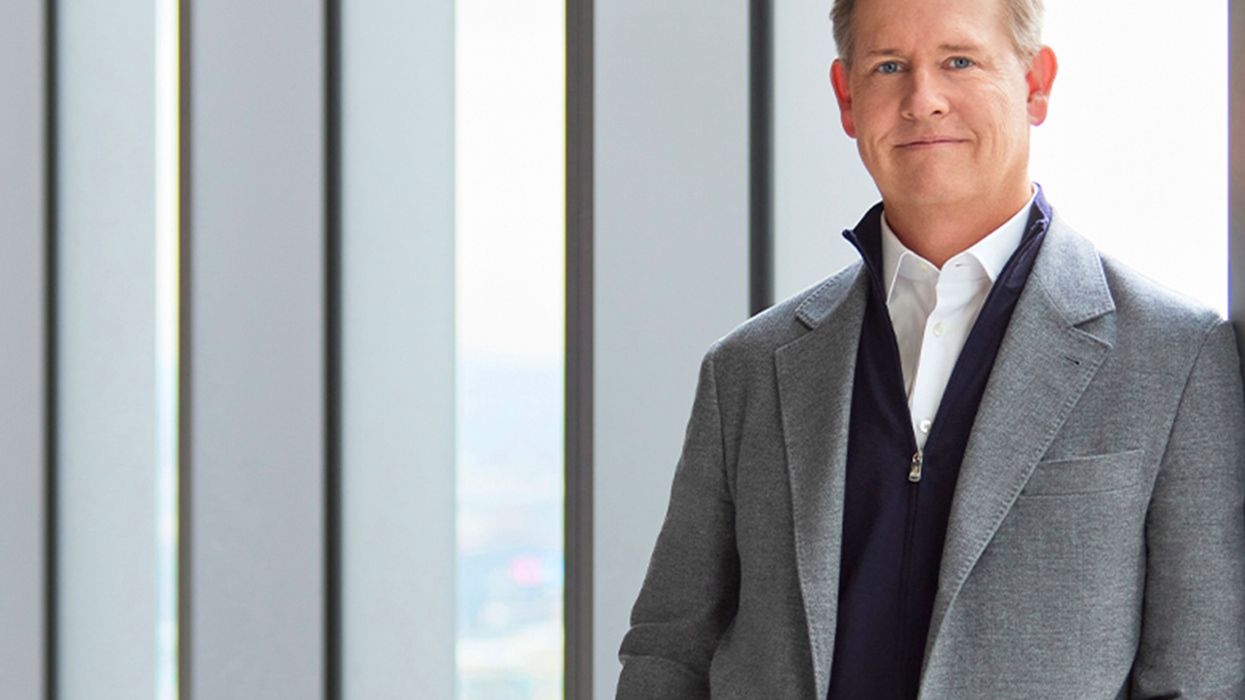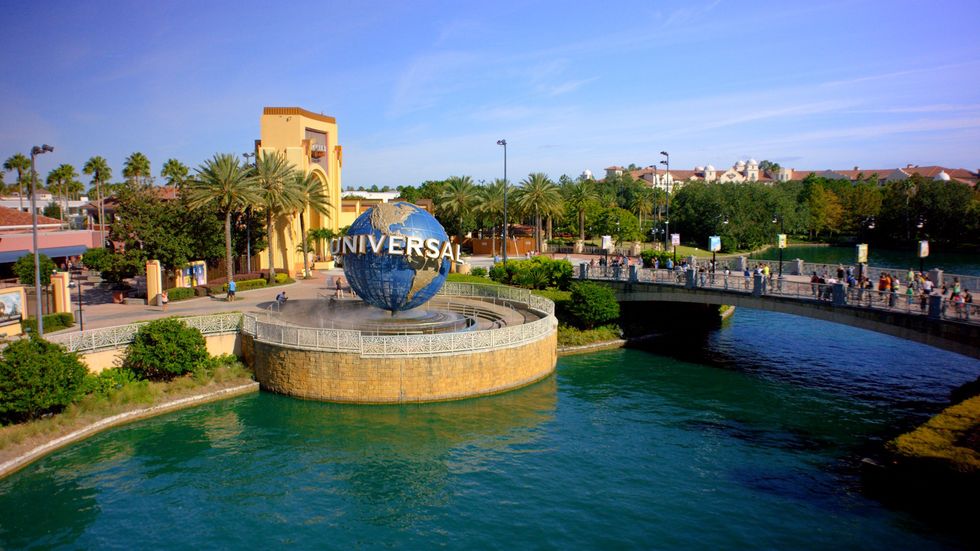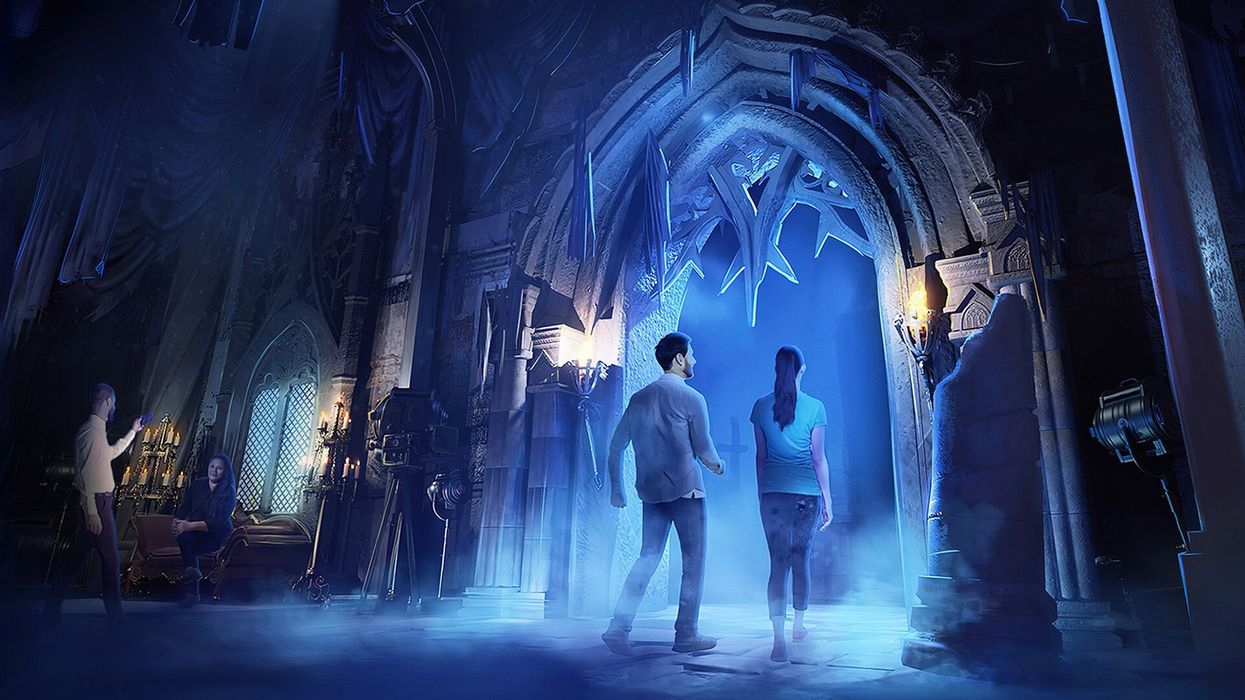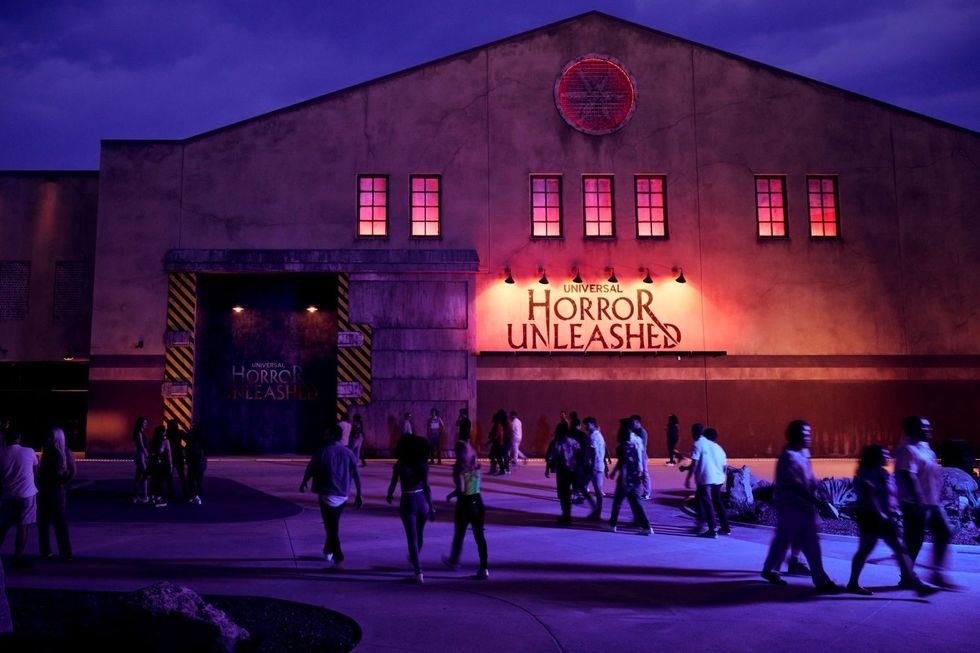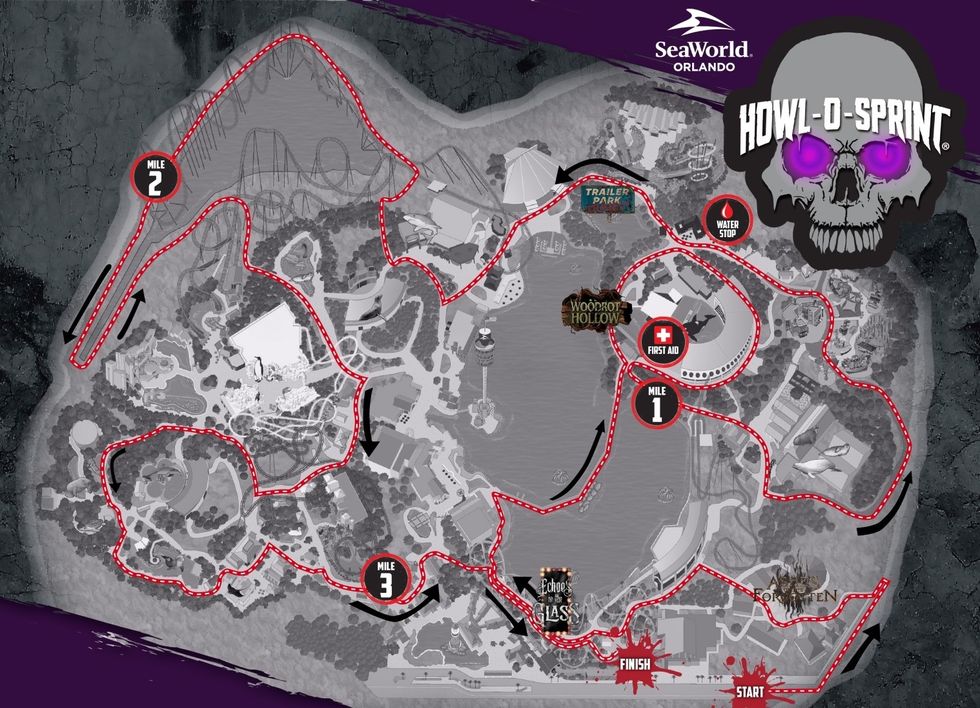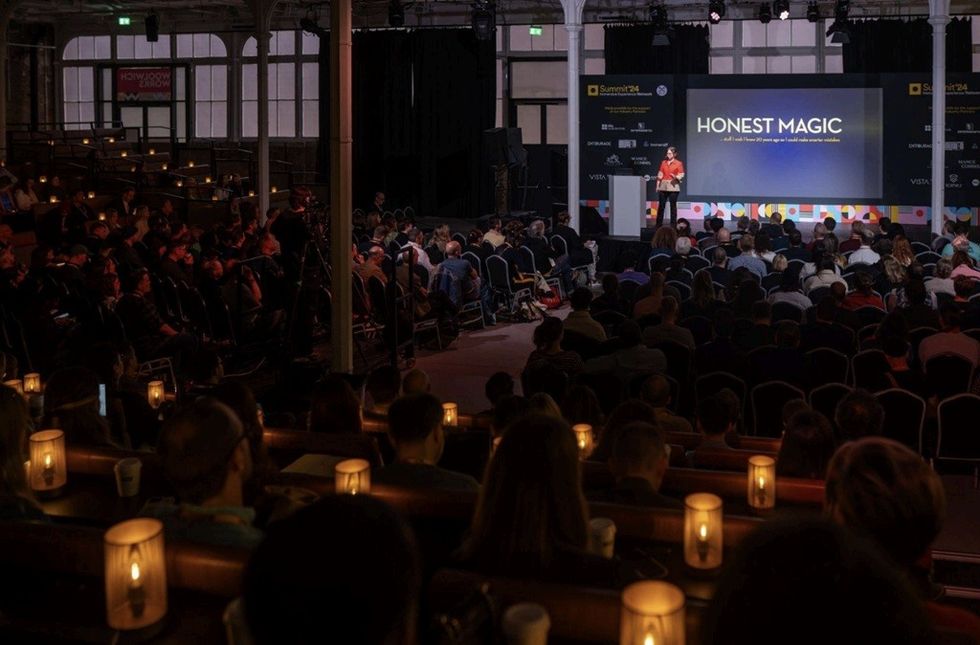Disney has given a sneak peek at some of its latest technological innovations in the newest episode of We Call It Imagineering on the Walt Disney Imagineering YouTube channel.
The series provides insight into how Imagineers are creating and innovating new lands, attractions, and entertainment experiences for future generations, combining imagination with world-class engineering.
Aqua robots
The team presented its latest developments in aquatic robotics. Starting by building a radio-controlled underwater plane with servo motors to control ailerons for up-and-down and rolling motions and a jet pump for propulsion, they gathered valuable data to apply to the next prototype.
"We use the exact technology, but on a dolphin," says Richard-Alexandre Peloquin, senior research engineer. "The ailerons are now the fins."
"We're applying some biomimicry here, literally, how dolphins move through space," adds Jonathan Becker, R&D Imagineer principal. "Now this starts to feel alive."
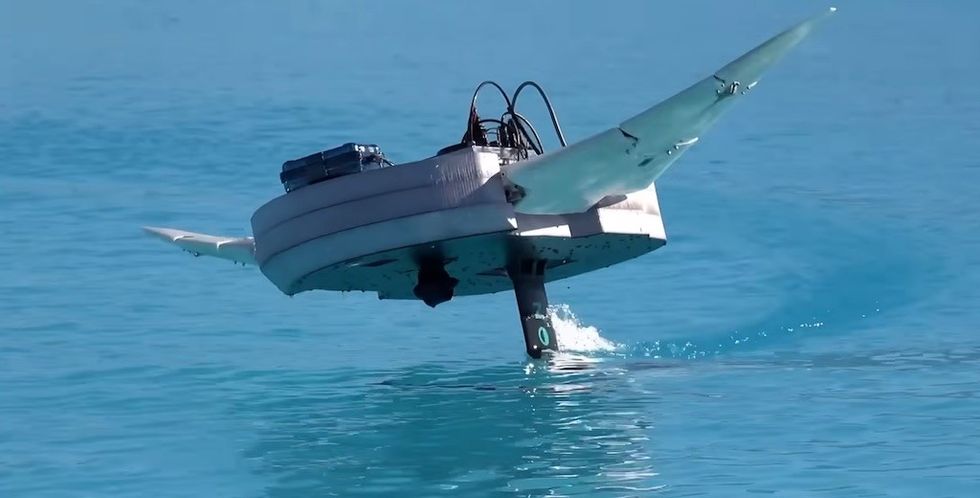
Following the dolphin prototype, the team created a hydrofoil that is capable of performing autonomous shows.
"The ship balances itself and then can drive and follow trajectories," says Peloquin. "And then the second level is the positioning of it all. We use a GPS and also ultrasonic sensors to know how high above the water you are.
"Now that we've got the tech in a good place, we're creatively trying to see how far we can take it, how far we can push it and how to tell a really compelling story with whatever character we're developing for it," says Becker.
Meta AR glasses
In the same video, Asa Kalama, VP, executive - creative & interactive experiences, showcased how Imagineering is working to integrate Meta’s Ray-Ban smart glasses into theme park operations.
"We have a really wonderful partnership with Meta to leverage their Ray Ban smart glasses for both guest-facing applications and also behind-the-scenes design applications as well," he explains.
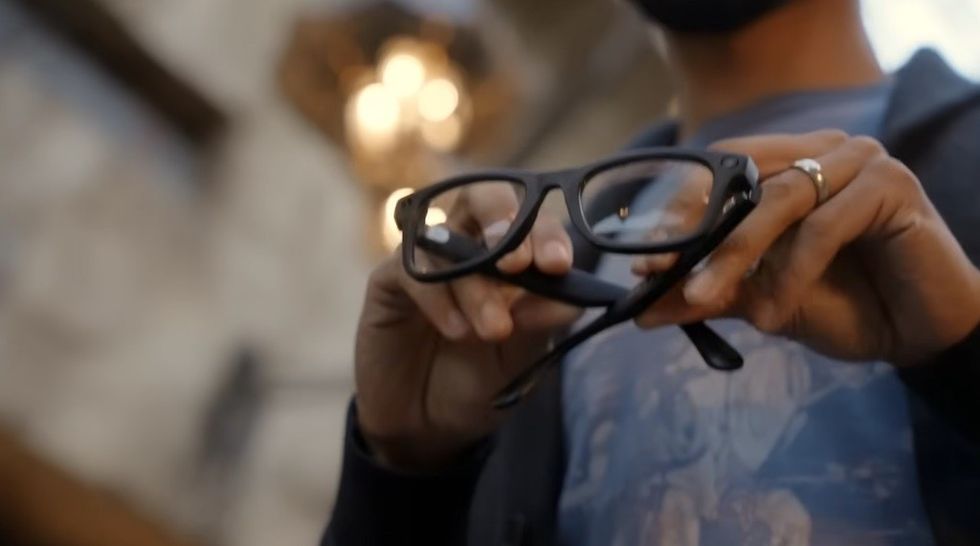
They have cameras, microphones, and speakers, essentially offering a virtual theme park guide in the guest's ear.
"The glasses can enhance the ways we tell stories for our guests, unlocking a world of information about the land that they're in," says Kalama.
"Just by looking around. I can ask questions about some of the architectural details, and I get the answer right in my ear. Maybe I want to learn a little bit more about a merchandise item for my child. All I have to do is look at it, ask, 'Tell me more information about it,' and then, right in my ear, I get all the product information."
Moonwalking robots
Moritz Baecher, lab director, spoke about how Disney R&D teams are using machine learning and AI to continue developing its robotics.
"We started from very basic structures with a huge ambition," he says. "We actually started with this humanoid test character. Can we get two legs to do stylised walking? We have characters that express emotion through motion, so stylisation is important. Artistic interfaces are important.
"We embraced reinforcement learning as a technology very early on. Reinforcement learning is the way we learn, actually, as humans."
Kyle Laughlin, SVP of research and development, adds: "Reinforcement learning is a branch of artificial intelligence which allows us to take animated figures, bring them into simulation and then teach them how to walk as if they were a young baby. We can do 10,000 hours worth of training in days.
"It used to take us years to develop robots. Now, using reinforcement learning, we're able to bring those robots to life in mere months."
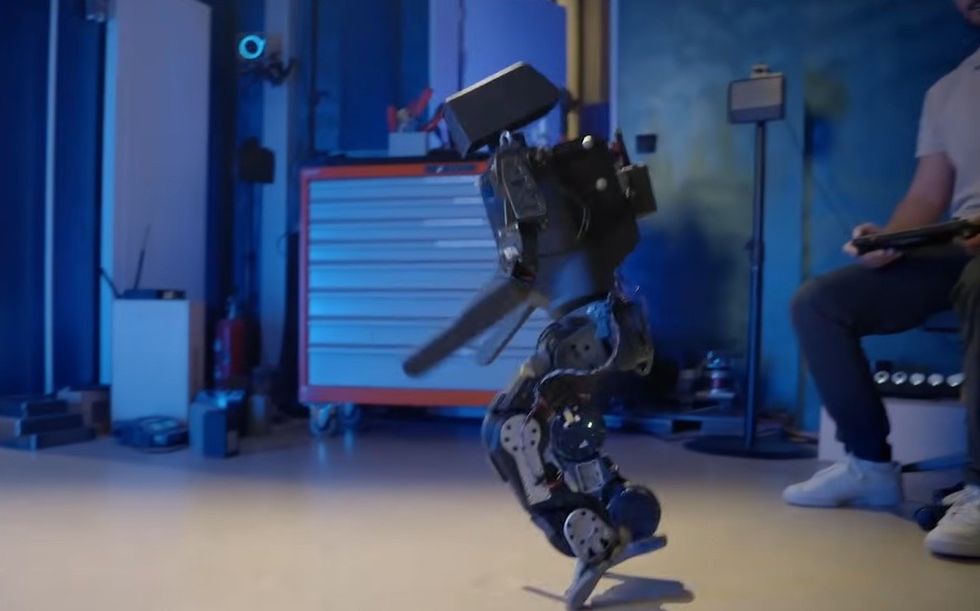
Espen Knoop, senior research scientist, discussed the initial innovation that paved the way for the award-winning BDX Droids, with the challenge to build a walking robot.
The goal was to give the robots human motion to make them feel lifelike.
"Getting something to work in simulation is one thing," says Knoop. "Getting it to work on robot hardware is a different challenge. The physical world is unforgiving. The robot will break if it falls too many times. But because we took the time to understand how the actuators move and tune the models, you can really start pushing those motions to the limit."
"And then we got it to moonwalk," adds Baecher.
H.E.R.B.I.E. and J.A.R.V.I.S.
The video also explores H.E.R.B.I.E. - a character from the recent Fantastic Four movie that has been brought to life as a cutting-edge robot for Disneyland.
"We were able to bring him from an idea to a reality in just a short three months," says Clare Carroll, R&D Imagineer senior.
In the film, the prop on set didn't balance itself, but to come to life in front of guests as a character, he needed to be able to actively maintain balance. Inside H.E.R.B.I.E. are sensors that track its angle, position, and speed, checking them 250 times per second to micro-adjust a ball and keep it upright, even during animations.
Moving and stretching his arms shifts the character's centre of mass, and continuously adjusting it during animations is a significant technical achievement.
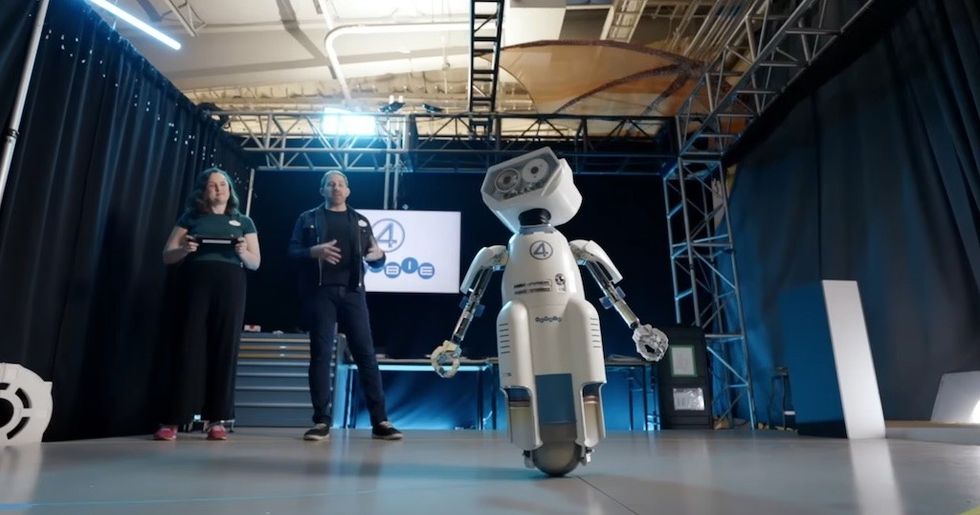
"More and more we want to be able to deliver these characters in their actual form that you see them in films and on TV or streaming faster into the parks," says Bruce Vaughn, president & chief creative officer.
All that wish fulfilment that any of our guests see on the screen now can be a physical experience with our guests," says Laughlin.
Meanwhile, J.A.R.V.I.S. is an internal tool, an AI ecosystem for the Imagineering teams.
"We're giving all of our Imagineers the ability to tap into the collective intelligence of all of Imagineering," says Doug Fidaleo, lab director for Disney research.
"We have 70 years of data that we have used to create the greatest attractions in the world," adds Laughlin. "J.A.R.V.I.S. was our first opportunity to digitise all of that data and be able to give it to an imagineer at their fingertips so that they could move more quickly."
Stuntronics
Tony Dohi, R&D Imagineer principal, presented the lineage of prototypes that resulted in the Spider-Man stuntronic.
The team began with a very simple robot, with a microcontroller and one degree of freedom controlled by a pneumatic cylinder.
"We were able to prove with this, we can take something that's roughly the size of a person and control its rate of spin in the air and how it lands. From this, we went to a stick man, a system that was more precision-focused. We also made sure that we can throw this over and over and over again.
"From two degrees of freedom, we came up with a robot that's human-sized. When you see this move through the air, spin and then drop into a net, I think we can actually do a Spider-Man character, but it also weighs about 150 pounds. Let's go with something smaller, and that's where the idea of Mini-Man came in."

Mini-Man is precision machinery: "All electric, sensors on board, computer on board. We can animate him to move as Spider-Man would."
The team then applied what they learned from a half-scale model to a full-size character.
"This robot, we thought we'd go with something that had the precision of Mini-Man, but now in full scale. And this is the culmination of our series of prototypes. We call it the Mark Two. This figure is human size, about 5'9", 95 - 100 pounds, made from printed 3D plastic aluminium pieces, where we need extra strength.
"We were able to emulate the different types of movements Spider-Man did in the movies."
Meet Olaf
Finally, the team revealed a self-walking Olaf character from the Frozen movies, which will be coming to World of Frozen at both Disneyland Paris and Hong Kong Disneyland.
Walt Disney, Imagineering Research & Development did such a beautiful job of creating this Olaf self-walking character," says Michel den Dulk, portfolio executive creative director, Disneyland Paris.
"It's really a symbiosis between the latest in technology and storytelling, and I can't wait for our guests to see Olaf in real life."
Yesterday, it was announced that World of Frozen, along with numerous new attractions, will debut at Disney Adventure World, the revamped second park at Disneyland Paris, on 29 March 2026.
Charlotte Coates is blooloop's editor. She is from Brighton, UK and previously worked as a librarian. She has a strong interest in arts, culture and information and graduated from the University of Sussex with a degree in English Literature. Charlotte can usually be found either with her head in a book or planning her next travel adventure.
